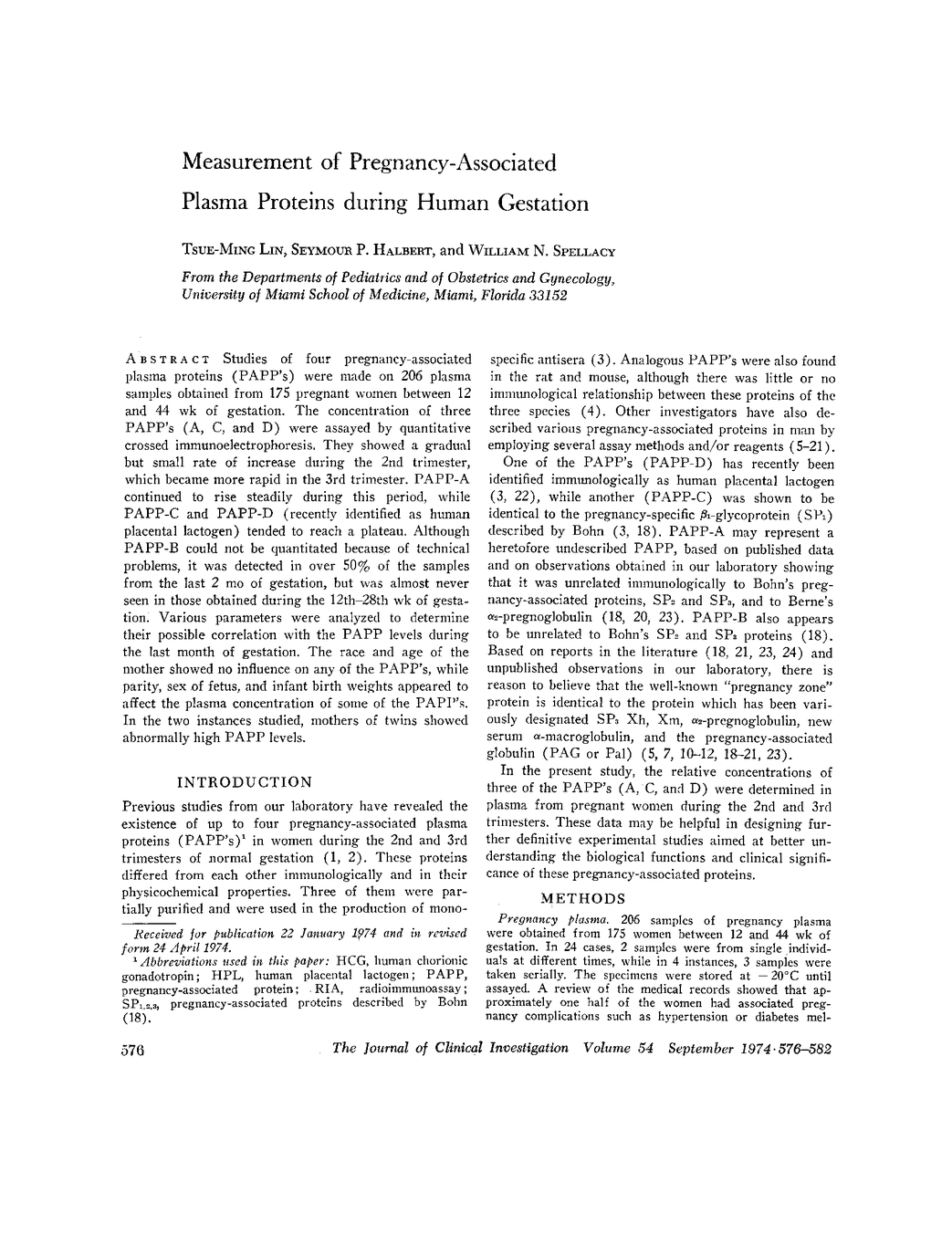Abstract
Studies of four pregnancy-associated plasma proteins (PAPP's) were made on 206 plasma samples obtained from 175 pregnant women between 12 and 44 wk of gestation. The concentration of three PAPP's (A, C, and D) were assayed by quantitative crossed immunoelectrophoresis. They showed a gradual but small rate of increase during the 2nd trimester, which became more rapid in the 3rd trimester. PAPP-A continued to rise steadily during this period, while PAPP-C and PAPP-D (recently identified as human placental lactogen) tended to reach a plateau. Although PAPP-B could not be quantitated because of technical problems, it was detected in over 50% of the samples from the last 2 mo of gestation, but was almost never seen in those obtained during the 12th-28th wk of gestation. Various parameters were analyzed to determine their possible correlation with the PAPP levels during the last month of gestation. The race and age of the mother showed no influence on any of the PAPP's, while parity, sex of fetus, and infant birth weights appeared to affect the plasma concentration of some of the PAPP's. In the two instances studied, mothers of twins showed abnormally high PAPP levels.
Authors
Tsue-Ming Lin, Seymour P. Halbert, William N. Spellacy
Other pages:
| 576 | 577 | 578 | 579 | 580 | 581 | 582 |




